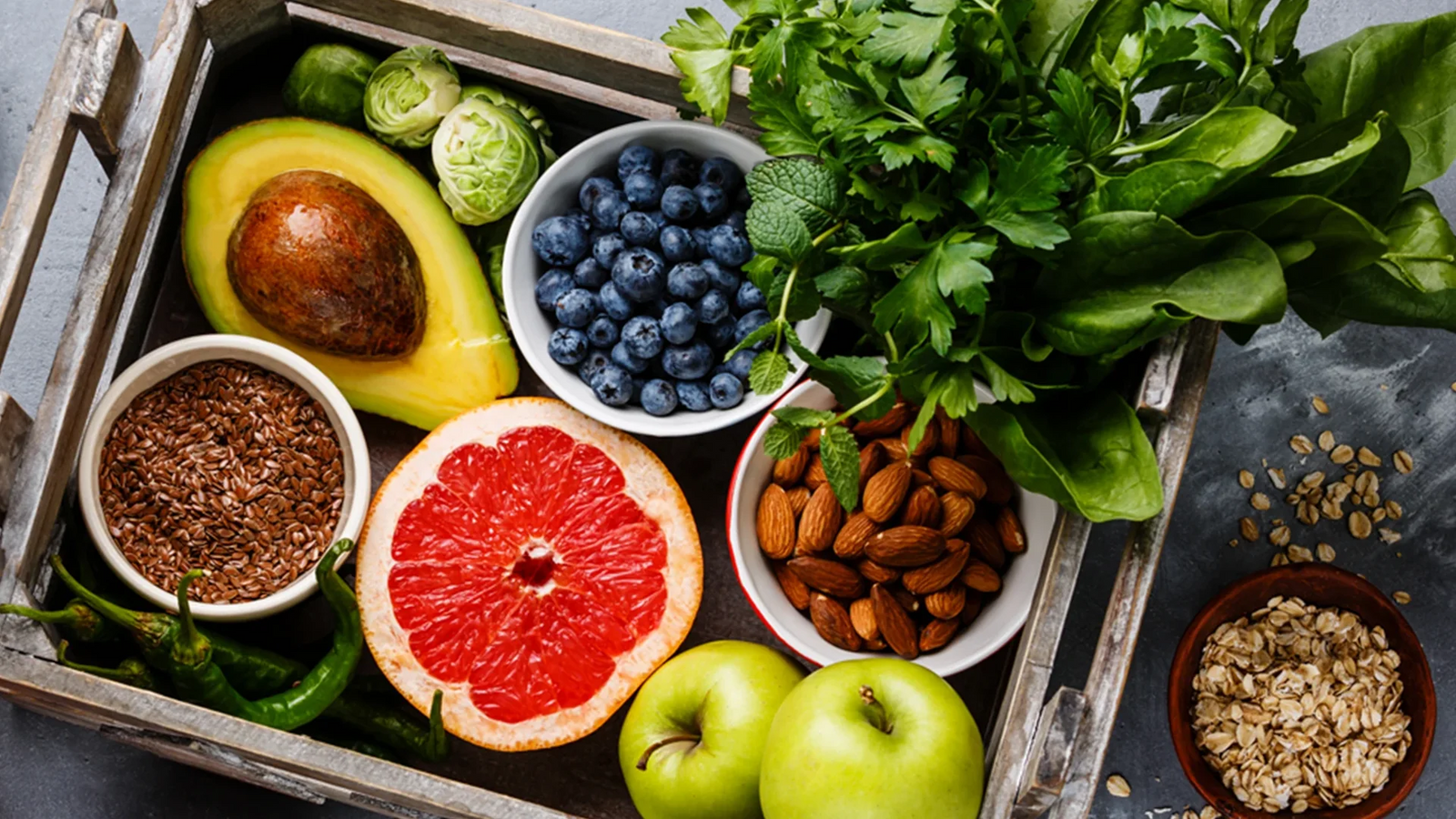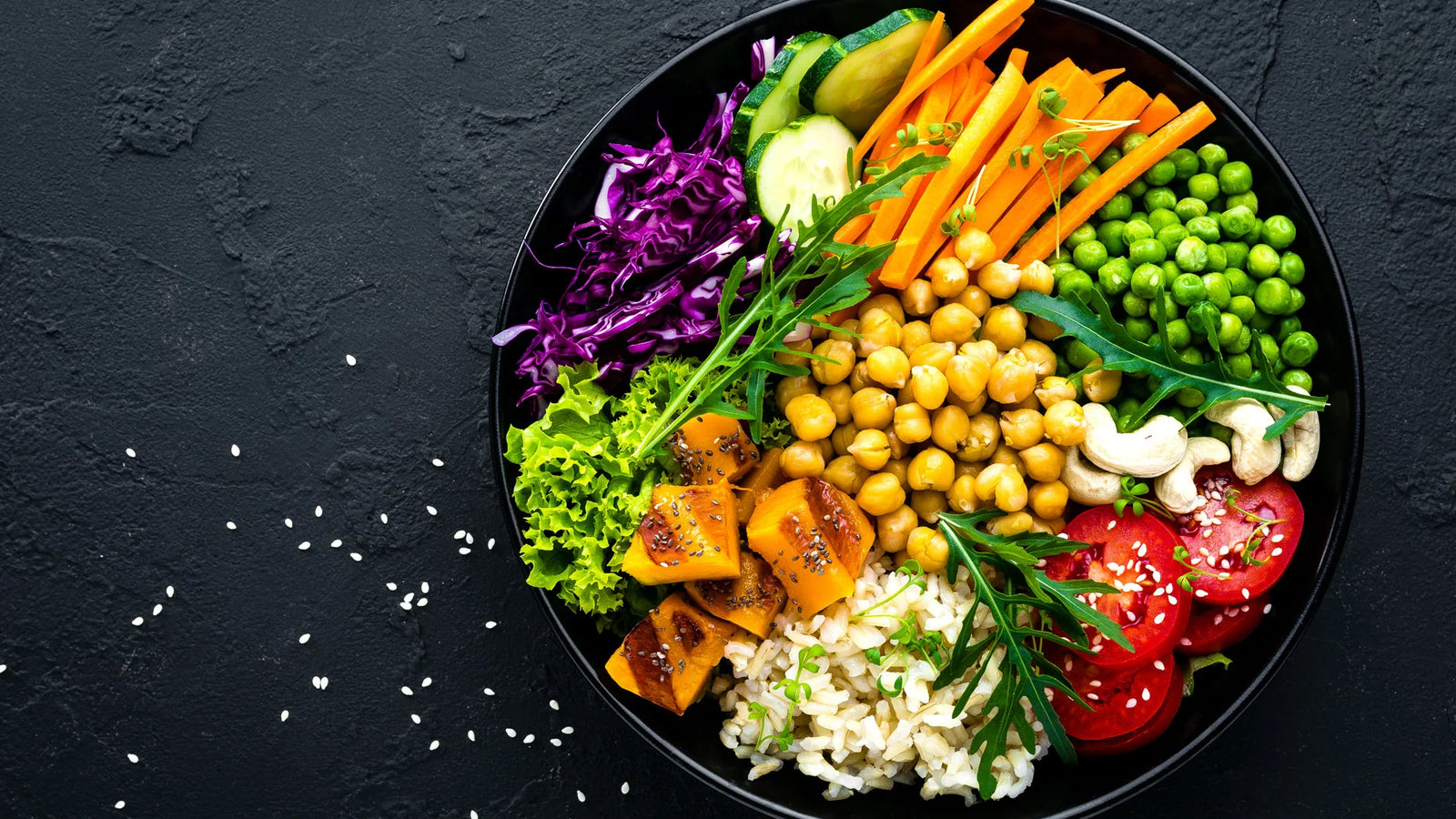Why is it important to eat a nutritious diet?
A balanced and healthy diet usually includes nutrient-dense foods such as lean proteins, unsaturated fats, whole grains and a variety of fruit and vegetables. On the other hand, we should exclude trans fats and excessive use of salt and sugar. To be able to make the right decisions we need to know the basic functions of nutrients. This will also help us build a healthier relationship with food.
In this article, we will describe in more detail what macro and micronutrients are and why we need all of them in our diet. We'll also look at which nutrients are essential, which ones we absolutely must include, and which ones are best to avoid.
Everyone has different caloric needs to maintain health and physical activity. These needs depend on the age, sex, height and weight of the individual. Let's look at 2 basic methods for calculating these caloric intakes:
Basal metabolic rate (BMR) - directly translated as basal metabolic rate or simply put the caloric needs of a person when at rest. Even when we are resting our body carries out many processes that require energy. For example, breathing, digestion, cell division, circulation, maintaining body temperature, etc.
Total daily energy expenditure (TDEE) - BMR plus the energy required by a given amount of activity to maintain our current weight. If we take in more calories than TDEE we will gain fat or muscle mass. Conversely, if we take in fewer calories than TDEE we will lose weight. Once we have determined our TDEE we can divide it into percentages of macronutrients as needed.
Macronutrients are carbohydrates, fat, protein and fiber. They are taken in large amounts and directly affect our energy levels and other important physiological processes.
Carbohydrates and proteins contain 4 kcal per gram, fat 9 kcal per gram, and fibre 0 kcal per gram if insoluble (prebiotics) and 4 kcal if soluble.
Most balanced diets have a 37:30:30:3 split. This means 37% of the TDEE is carbohydrate, 30% protein, 30% fat and 3% fiber. Depending on needs, these percentages may vary slightly.
Fats
We all know about fat's bad reputation. Given the taste characteristics of fats, it's easy to overdo it. Excluding them altogether is not a solution either, as fats are involved in a number of important processes such as the production of hormones and neurotransmitters, the absorption of water-insoluble vitamins and the maintenance of cell structure and processes.
There are 4 types of fats:
- Trans fats
- Saturated fats
- Monounsaturated fats
- Polyunsaturated fats
It's a good idea to have 80% of the fat we consume come from monounsaturated and polyunsaturated fats. The remaining 20% from saturated. Rich sources of unsaturated fats are olive oil, flaxseeds, sunflower seeds and oil, peanuts, avocados, fish. It is desirable to exclude trans fats, which are contained in highly processed and fried products.
You must have heard about essential fatty acids? These are Omega 3 and Omega 6 fatty acids. They are extremely important for the health of our cardiovascular system and our brain. Since Omega 6 is often consumed in many diets in the form of sunflower, soy, corn and peanut butter it is desirable to pay more attention to Omega 3. It is important to maintain a 1-2:1 ratio of Omega 6 to Omega 3. Rich in Omega 3 fatty acids are flaxseeds, canola oil, beans, eggs, beef, chia, walnuts and oily fish such as salmon, tuna, herring, trout, etc.
Carbohydrates
Carbohydrates are the most efficient source of energy for our body. They are involved in the structure and function of cells, tissues and organs.
Basically we can divide carbohydrates into 2 types - simple (fast) and complex (slow).
Simple carbohydrates are quickly absorbed by the body, which leads to a rapid rise in blood sugar. This in turn causes a large release of insulin, which moves glucose out of the blood and into the cells where it is stored or used as energy. Simple carbohydrates are sugar, white bread, ice cream, chocolate, etc.
Complex carbohydrates are absorbed more slowly by the oraganism, causing slight rises and falls in blood sugar. Often for this reason, eating complex carbohydrates leads to a longer period of satiety. Most also contain more fiber, a lower glycemic index, and are richer in micronutrients (vitamins and minerals). Complex carbohydrates include rice, oatmeal, whole grains, couscous, potatoes, quinoa, etc.
And despite the obvious benefits of complex carbs, it doesn't mean we should avoid simple ones completely. Both types have a place in our diet. Each individual's health, needs and activity level must be taken into consideration.
Fibres
Technically fibre is a carbohydrate, but we can consider it as a separate macronutrient. They are divided into 2 types - soluble and insoluble.
Both types play a major role in the health of our intestinal tract. They improve food absorption, have a satiating function and support the good bacteria in our gut.
It is good to take fibre from a variety of sources with every meal. Fiber-rich foods are oatmeal, whole grains, apples, pears, raspberries, capins, raw nuts, legumes, etc.
Protein
Proteins are extremely important for a number of processes that take place in our body. From the functioning of the immune system and nutrient transport, to the regulation of DNA function.
Amino acids are the building blocks of protein. There are 20 essential amino acids, of which 9 are essential. This means that our body cannot produce them and we have to get extra.
We can divide protein sources into 3 types - complete, incomplete and complementary. Complete proteins contain all the essential amino acids in adequate amounts. Such sources are animal products, eggs, soy and seafood. Incomplete proteins are those that do not contain all the essential amino acids. These include most plant foods such as beans, peas, grains, fruits, vegetables, nuts and seeds. Complementary proteins are several types of incomplete proteins that, when combined in one meal or in several meals during the day, supply the required amount of essential amino acids. For example, people who prefer plant-based diets often combine beans and rice in their diet to get the amino acids they need.
If we were to focus on one amino acid in particular, it would be leucine. It is responsible for "turning on" protein synthesis. When we consume enough leucine, the enzyme mTor is released, which activates protein synthesis. Without enough leucine in our diet, protein synthesis remains "off". The amount of leucine we need to take is about 2.5-3 g to activate the process.
Micronutrients
Micronutrients are vitamins and minerals. Compared to macronutrients, we need much smaller amounts of micronutrients. We have all heard about their beneficial properties and we all agree that they should be present in our diet. Vitamins and minerals are many and it is difficult to keep track of their quantity. Therefore, the simplest step we can take is to eat a varied diet.
In our hectic lives we often skip meals or resort to unhealthy foods.
Oh!Good Complete Meal is a nutritious protein shake that will fuel your body with all the nutrients you need from one meal.
It's ready in less than a minute and contains a complete balance of plant protein, carbohydrates, healthy fats, fibre, 27 vitamins and minerals and an added Bulgarian probiotic.
The author of the article is Stavri Stavrev - a certified nutritionist, coach and CrossFit athlete with over 10 years of experience.
If you want to build proper eating habits and achieve peak physical fitness, you can connect with him via his Instagram account.














